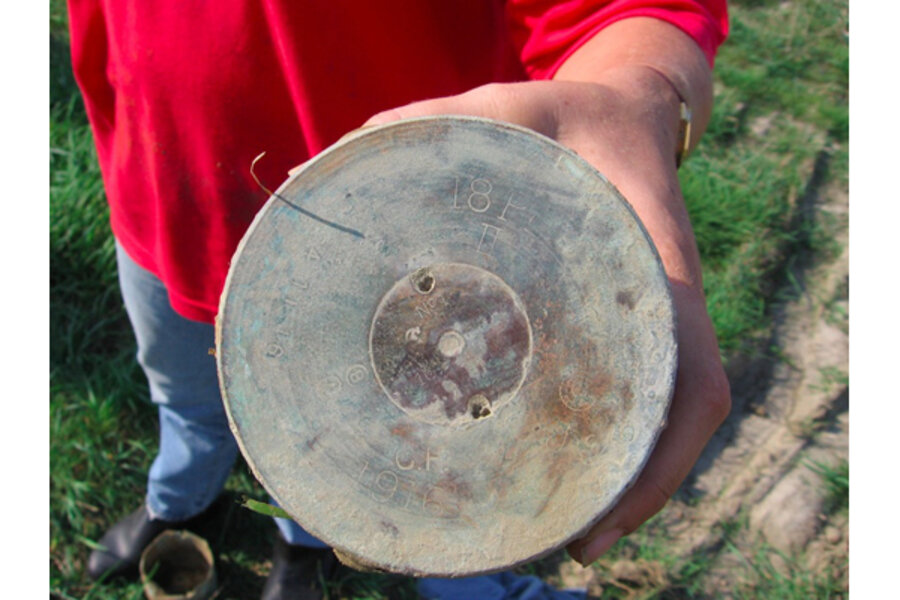World War I – and its unexploded weapons – continue to haunt the present
Loading...
The Great War and its aftermath remain with us still. Looking back at World War I, we can find the roots of so much that we inherited, from the horrific battlefield machinery of death to the bizarre post-war national boundaries set by fickle diplomats. And, of course, there's the legacy of the enduring conflict between America's commitment to isolationism and its desire to bring democracy to the world.
Another legacy is unseen: the millions upon millions of people who aren't with us today because their would-be parents, grandparents, and great-grandparents were killed by guns, bombs, poison gas, starvation, and disease.
In his new book "To End All Wars: A Story of Loyalty and Rebellion, 1914-1918," historian Adam Hochschild does a remarkable job of uncovering moments of misery, courage and stupidity. (I'll be reviewing the book later this month for the Monitor.)
Hochschild writes about how the war continues to take a tragic human toll: leftover shells buried in the dirt of France and Belgium still explode and kill farmers as they plough their fields. It's called an "iron harvest."
Since the war, 630 French "démineurs" – those who find and detonate unexploded shells – have died in blasts, The Atlantic reported in a 2004 book review.
I had my own encounter with an unexploded shell in 2006 during a tour of World War I battlefields and cemeteries in the region of Belgium known as Flanders. We dropped by an archaeological site in a field next to a gas station and found volunteers who'd just uncovered an unexploded German shell. You can see it in the accompanying photo. The date on the shell, which was about 20 inches long, is 1916. Holding the shell – carefully – was probably harmless. Banging it with a hammer, however, would have been a very bad idea.
The shell served as a handy metaphor for how the past is always present, even under our feet, waiting to surprise those who dare to forget.
•••
For more on World War I, here's a brief selection of notable books:
• 1962's "The Guns of August," a deeply detailed exploration of the war by Barbara Tuchman, is one of the most influential history books of all time. President Kennedy was a high-profile fan of this book and reportedly gave copies to his military advisers to read.
• "Parade's End," a series of 1920s novels by Ford Madox Ford, depicts the British involvement in the war. HBO and BBC are currently adapting the novels for a five-part miniseries scheduled to air next year.
• "Paris 1919: Six Months That Changed the World," a 2002 book by Margaret MacMillan, examines the post-war peace conference that created the modern world for better and, in many cases, for worse.
There are plenty of other fine books about World War I. Wikipedia has an extensive list of books and films.
Randy Dotinga is a Monitor contributor.





